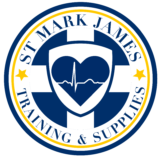Choking can occur in both children and adults. Luckily, it can be prevented. Food is responsible for most cases of choking but also other small objects such as buttons, coins and small toys.
When it comes to toys, they are designed to be used by children within an age range. The age guidelines take into consideration the safety of a toy based on any possible choking hazard. Young children should not be allowed to play with toys built for older children.
Potential objects that are choking hazards

Various items that are considered as choking hazards must be kept out of reach from infants and young children such as the following:
- Buttons
- Coins
- Balloons
- Toys build with small-sized parts
- Small balls or marbles
- Toys that can fit whole in the mouth of the child
- Pen or marker caps
- Small hair barrettes, bows and rubber bands
- Pieces of dog food
- Small button-type batteries
- Refrigerator magnets
Potential food hazards
Certain foods can cause a choking episode. Foods such as hot dogs, grapes, raw carrots or peanuts must be kept away from infants and young children.
It is best to slice up food for babies and young children into pieces not bigger than ½ inch. Encourage the child to chew food properly and supervise during meal times. Children must sit down while eating. In addition, they should not be allowed to run, play, walk or lie down with food inside the mouth. Be aware of the actions of older children as well. Remember that many choking episodes occur when an older child gives food or a toy to a younger child.
Foods to keep away from children younger than 4 years include:
- Nuts and seeds
- Hot dogs
- Chewing gum
- Popcorn
- Chunks of cheese or meat
- Chunks of raw vegetables
- Whole grapes
- Chunks of peanut butter
- Hard or stick candy
Disclaimer / More Information
The information posted on this page on choking is for learning and educational purposes only. To learn to deal with and prevent choking among children, register for first aid training at one of our training centers located throughout Canada. The training centers are in Edmonton, Calgary, Vancouver, Kelowna, Surrey, Winnipeg, Toronto, Ottawa and Halifax.
